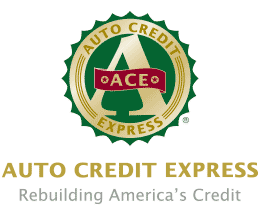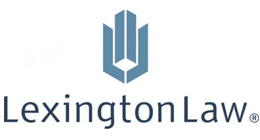Whether it’s an unexpected medical expense, car repairs, or just a little extra cash to help pay the bills, most of us have needed financial help at some point in our lives. When we were young, we had the luxury of turning to our parents for money, but unfortunately, lenders don’t know and love us like our families do, so they can only judge whether to lend to us based on the information contained in our credit reports.
If a few bad decisions have negatively impacted your credit rating, receiving financial assistance can become a challenge. You can increase your odds of approval by knowing the different types of loans available to those with poor credit, and understanding what lenders look at when determining your creditworthiness. In many cases, this is a) your ability to repay the loan (your income), and b) your history of paying past loans.
A personal loan can be used for almost anything, hence the “personal” moniker – you do not have to disclose to online lenders why you’re requesting a loan, as you typically would with a traditional bank loan. There are numerous online personal lenders and lender networks available to people with bad credit, with the majority offering loans from as little as $100 to as much as $35,000. However, the loan amount and terms you receive will be largely based on your credit.
How to Get a Personal Loan with Bad Credit
The first step is to choose a lender that works with subprime applicants such as those listed above and on our personal loans reviews’ page. These lenders and lender networks have a history of approving applicants with less-than-stellar credit, helping to make the application process easier. Having a bank account that accepts direct deposits and proof of income are necessary in most cases, but actual requirements will vary by lender.
Regardless of your credit situation, you should always shop around and compare to find the best rates and terms. Of course, try to be realistic with your expectations, as you’re not going to receive the same loan offers as someone with good to excellent credit (700+*). You’ll likely see high interest rates, making it even more important to shop around so as not to fall victim to predatory lending. Unfortunately, some lenders – such as payday lenders – are known to prey on desperation. We’ll discuss them in more detail below.
Short-Term Loans
Short-term loans are generally for smaller amounts of up to a few hundred dollars and are accompanied by high interest rates and fees. Lenders usually require you to pay the money back within two weeks or when you receive your next paycheck, which is why they’re called payday loans.
If you’re in a pinch and have poor credit, short-term loans can provide emergency funds as needed, but we highly advise you to pay the loan back in full as soon as possible, or you may quickly find yourself in a debt trap. This is because finance charges could result in interest rates as high as 400% — and no, that’s not a typo.
If you can wait to receive the card in the mail, you may be better off applying for a credit card for poor credit for your short-term lending needs.
Online Installment Loans
On the other end of the spectrum are installment loans, which are typically for larger amounts that can be paid off over a lengthier period of time, and carry more favorable interest rates than their short-term counterparts. However, sometimes it’s more difficult to be approved for installment loans than it is for short-term loans. This is because a larger loan puts the lender at risk to lose more money if you default on your payments.
Depending on how time-sensitive your financial needs are, improving your credit score before applying for a loan is always a good idea. With an improved credit score, your approval chances will increase while the interest rates you’re offered will decrease. The credit repair options above and on our list of top-rated credit repair services can help you evaluate your credit standing and decide next steps tailored to your specific situation.
The good news is there’s no required minimum credit score to be approved for an auto loan, as approval with poor credit is primarily dependent on your income. This is because the vehicle is the collateral – if you stop making payments, the vehicle is repossessed (and your credit score plummets). The bad news is the lower your credit score, the higher the interest you can expect to pay for your auto loan.
How to Get a Car Loan with Bad Credit
You’ll hear this single piece of advice everywhere you turn – shop around. This is true for any loan you ever decide to take out, even with good credit. And before you ever step foot on a car lot, be sure to do your own research, or you’ll risk being taken advantage of. This includes pulling your own credit report and score so you have an understanding of the items within your file and aren’t caught off guard – don’t let the salesman tell you what your credit is without knowing it yourself.
Additionally, crunch the numbers on the type of vehicle you want. A lot of online resources, like TrueCar and Edmunds.com, exist to help shoppers get the best deals. These resources assist prospective buyers in locating the make, model, year, and features you want with pricing information in your area. You can even see what others paid for the same vehicle, and whether it was a fair deal.
Where Can I Get an Auto Loan?
The options above and our expert-reviewed auto lenders and networks provide a great place to begin. These are reputable lenders and dealer networks that specialize in auto loans for bankruptcy, bad credit, first-time buyers, and repossessions. As mentioned previously, a minimum pre-tax income upwards of $1,500 a month is generally required. Once you fill out your qualifying criteria online, these networks work to match you with a dealer in your area who can finance your next vehicle.
Another option is receiving financing through a credit union, which are known to be more forgiving to those in poor credit situations than traditional banks, and oftentimes offer lower interest rates. The only caveat is you’ll need to become a member of the credit union, with membership criteria varying by institution. As with any loan, if you have the time to improve your credit prior to applying, it’s worth the wait.
Everyone needs a roof over his or her head, so obtaining a mortgage with poor credit is certainly possible. By knowing your options and who to work with, you can save a lot of time and denial.
How to Get a Home Loan with Bad Credit
Working with a reputable lender who specifically helps those in less-than-perfect credit situations, such as those listed on our home loans reviews’ page, is a good first step. Many of these lenders offer free pre-approval, so you’ll know where you stand before you find the perfect home, and they also understand that you may not have tens of thousands of dollars for a down payment, offering much lower down payment options, some as low as 3.5%. Of course, if you do have a large amount saved for down payment, this can help your odds of approval, as can having a track record of on-time rent payments for the past 12 months or longer.
Home Equity Loans
Home equity is determined by the market value of your home – if your home is worth more than you owe, you have equity — which you can borrow against if you’re in need of a large sum of money. These types of loans are sometimes referred to as a second mortgage. Oftentimes, home equity loans require good to excellent credit; however, the lenders we’ve reviewed and rated can help low credit score applicants who are looking to borrow against their home’s market value.
FHA Loans
FHA loans are mortgages insured by the Federal Housing Administration that can only be attained through FHA-approved lenders. They are specifically designed for people with poor credit and offer attractive down payment and interest rates. This is because borrowers are required to pay mortgage insurance, as this is how the lender protects itself in the event you default on payments. And because of the insurance protection, lenders are able to offer more lenient qualification requirements, enabling those with credit scores even as low as 500 to apply. If your credit score is 580 or higher, you may qualify for a down payment as low as 3.5%, but if your credit score is below 579, you’ll be required to make the standard 10% down payment.
A debt consolidation loan is essentially a type of personal loan – the money is taken out to pay off existing unsecured debts (most commonly credit card debt), usually at a lower interest rate than what you’re currently paying, therefore allowing you to save money in the long run.
Additionally, you can go from multiple monthly payments to one, merging – or consolidating – your debts. This also helps you more easily manage your payments, rather than juggling multiple due dates. Last but not least, your credit score may rise after taking out a debt consolidation loan for two reasons: you could potentially improve your mix of accounts (10% of your FICO credit score), and your previous debts will be reported to the credit bureaus as paid.
How to Get a Debt Consolidation Loan with Bad Credit
The amount of existing unsecured debt you have as well as the size of loan you’re seeking will both impact your ability to be approved. You can increase your approval chances, though, by using a co-signer. Not all lenders allow co-signers, so be sure to shop around for one who does. The same basic principles for obtaining a personal loan apply to debt consolidation loans, as well: Even if you have a low credit score, a steady income and a low debt-to-income ratio will increase your odds of approval.
Where Can I Get Debt Consolidation Loans?
A debt consolidation loan can be applied for through any of the personal loans options above or through our top lender recommendations. When deciding between lenders, be sure to choose one that doesn’t charge a loan origination fee. If you find you’re unable to be approved for a debt consolidation loan, it may be time to seek assistance from a debt relief company.
Another option for consolidating your debts and obtaining a lower APR is to apply for a balance transfer card. However, these are only open to those with at least fair credit, so if your score is above 650*, it’s an offer definitely worth taking advantage of. These types of cards allow you to pay 0% interest on transferred balances for a period of time determined by the issuer — usually between 6 and 18 months — but be mindful of balance transfer fees.
Your credit score and the amount you’re seeking will play a big role in getting a lender to help fund your business. Many business loan requests are for large amounts, and having the capital to pay the money back is largely dependent on the success of your business – this is why these types of loans can be more difficult to be approved for than traditional loans. In fact, only 27% of applicants who go through banks are approved for a business loan, according to the Small Business Association.
How to Get a Small Business Loan with Bad Credit
If bad credit is preventing you from getting a business loan, the silver lining is that alternative financing options exist to help SMBs. These include online business lenders and peer-to-peer platforms. Lenders will evaluate previous years’ performance of your business, whereas startups will need to provide a business plan and financial projections. If you’ve been rejected in the past, you may need to resort to ulterior methods of financing, like taking out a home equity line of credit as discussed above, or even considering a business credit card.
Business credit cards characteristically offer larger lines of credit than do consumer cards and offer rewards and discounts for business-related purchases. Best of all, they have much more lenient application requirements — no business plan or financial projections required.





